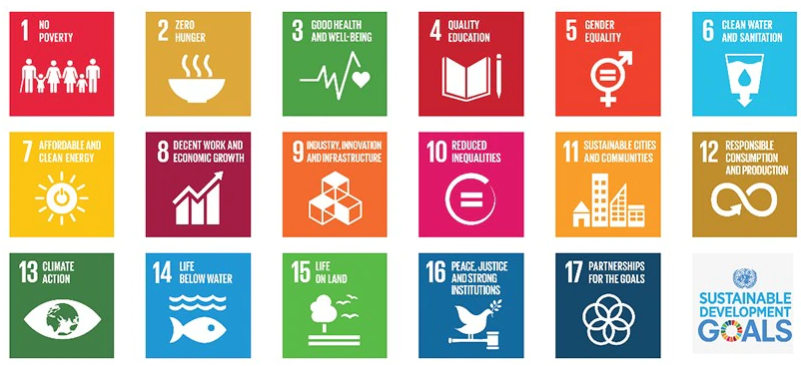The UN Sustainable Development Goals (SDGs)
Ever since the United Nations defined its Sustainable Development Goals (SDGs) in 2015, investors have become increasingly interested in investments that contribute to the realization of these goals and provide a good return. The 17 goals, which should be achieved by 2030, target a broad range of topics such as the availability of water and sanitation for all, food security, achieving gender equality, and access to affordable and sustainable energy.
The challenge: measuring an investment’s impact on the SDGs
It is easy to imagine that, for example, a solar company has a positive impact on the goals, and an oil company a negative one. The challenge, however, is to properly evaluate and quantify the contribution of all companies in an investment universe when building a targeted SDG strategy. This requires a framework, with clear, objective and consistent rules.
RobecoSAM is one of the first asset managers to meet this challenge by developing a proprietary SDG framework. This consists of taking a three-step approach. Robeco’s Credit team will use this framework for the global SDG credits strategy that will be launched in May. We will briefly explain the three steps.
Step 1: What does the company produce?
In step 1 we link companies’ products and services to the SDGs. To what extent do they contribute? Companies are assessed on an extensive set of rules and Key Performance Indicators (KPIs). These are summarized in a guidebook. The guidebook states whether the contribution of these products and services is positive, neutral or negative.
What’s new in credits?
Stay ahead with our newsletter on the latest in credit investing.
For the telecom sector, for example, the starting point is positive. Telecommunications are an essential part of the infrastructure in a safe and connected society. Farmers can use mobile phones to check market prices before selling to middlemen, and market traders can accept payments in mobile money. This way, the telecom sector can contribute to a proper infrastructure (SDG 9), economic growth (SDG 8) and ultimately to the reduction of poverty (SDG 1).
We then determine the extent of the contribution, which in the case of telecom we deem low. Subsequently, we then dig deeper by looking at the individual companies within this sector and how they score on a set of KPIs. If, for example, more than 25% of the telecom company’s sales take place in emerging markets (which have most to gain from a good telecom network, as e.g. mobile payments can provide large numbers of unbanked with bank accounts), we upgrade the impact from positive-low to positive-medium. See figure 2 for an illustration of the KPIs used.
Step 2: How does the company operate?
SDGs are also about how companies operate themselves. Are they polluting, do they respect labor rights, do they refrain from corruption? In step 2, the credit analysts check if the way the firm operates is compatible with the SDGs. If necessary, the SDG ratings can be adjusted.
Step 3: Are controversies known?
In the final step, we check whether the company concerned has been involved in any controversies, such as oil spills, fraud or bribery. This step can lead to adjustments in the rating. If firms commit serious and structural breaches of the UN Global Compact, they are excluded.
The outcome of this three-step analysis is quantified with an SDG score. This is shown in Table 1.
Table 1 | SDG rating methodology

Source: Robeco
The good and the bad
Robeco’s credit analysts and RobecoSAM’s SI analysts have done a mapping exercise of some 450 companies. 62% of the companies have been assessed as making a positive contribution, such as grid operators, healthcare companies, banks (by providing finance, especially in emerging markets, banks play an important role in fostering innovation and stimulating economic growth) and utilities with a relatively small share of coal, nuclear energy and oil in the energy generation mix.
26% of the companies analyzed make a negative contribution. Examples are energy producers with a relatively large share of fracking, companies that produce unhealthy food, or car manufacturers with a low share of EV/hybrid models.
Global SDG Credits DH EUR
Conclusion
Assessing a company’s contribution to the SDGs is a challenge. However, we have found a way by applying the RobecoSAM SDG framework, which quantifies the contributions that a company’s products and services make to the SDGs. Results of our analysis indicate that sectors with a weaker SDG profile include the energy, car manufacturers and food & beverage sectors. However, we have also found that there are more than sufficient issuers to create a well-diversified global credit portfolio with a positive impact on the SDGs.



















